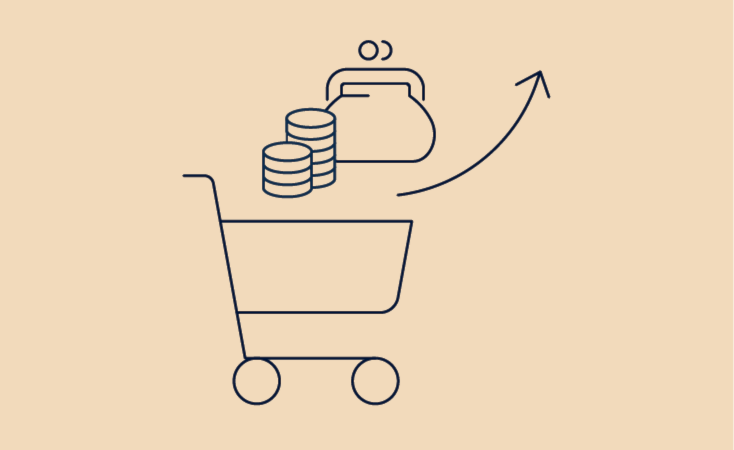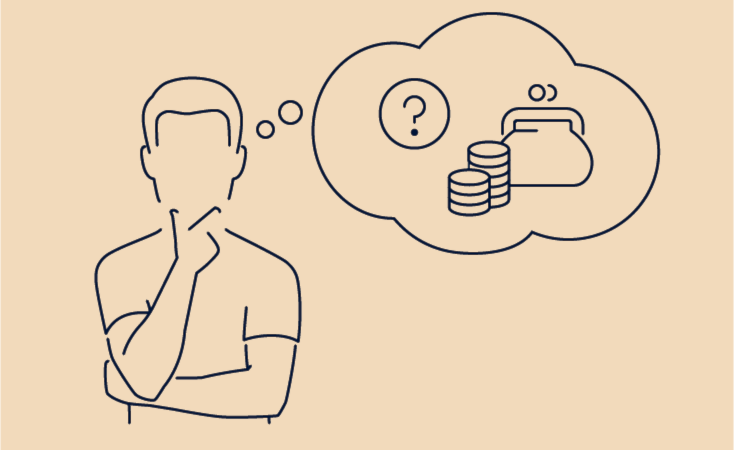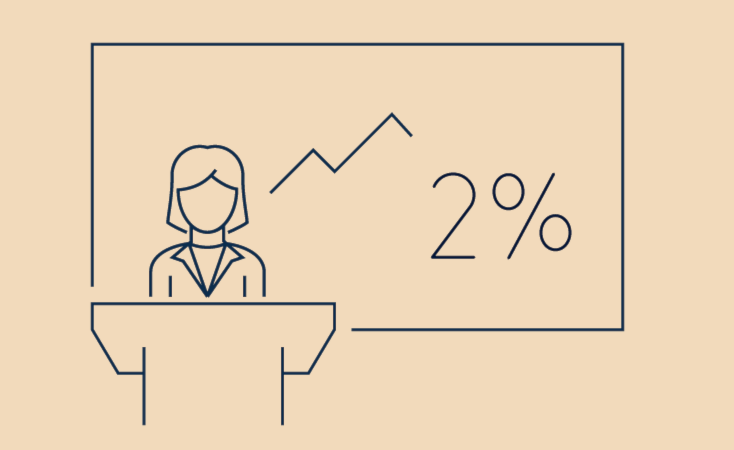
Inflation
Norges Bank’s operational target is annual inflation of 2 percent. Inflation is the rise in prices.
Norges Bank is responsible for keeping inflation low and stable to provide financial predictability for everyone.
Key figures
Inflation (CPI)
3%
Past 12 months
Links

Inflation describes rising prices
Inflation is a measure of how fast prices are rising over time and applies to goods, such as food or T-shirts, and services, such as haircuts or train tickets.

Consequences of high inflation
When prices rise much faster than wages, people can buy fewer goods and services. This may increase uncertainty about trying to make ends meet and make it more difficult to plan ahead. Pay increases that appear generous when they are agreed may be wiped out by inflation a few months later, and businesses find it more difficult to set the right price for their products. People with limited financial means are hardest hit when inflation is high.

How does Norges Bank address high inflation?
Norges Bank is tasked with keeping inflation low and stable over time. If prices start to rise too rapidly, measures may be necessary to dampen inflation. The policy rate is then the Bank’s most important monetary policy instrument. Normally, a higher policy rate will result in lower inflation. When inflation is too high, the Bank will respond by raising the policy rate.
Links
How does Norges Bank measure inflation?
Inflation is measured by comparing the price of goods and services today with how much they cost one year ago. So if inflation is 2 percent, this means that prices are 2 percent higher (on average) than they were one year ago. For example, if a T-shirt cost NOK 100 one year ago and now costs NOK 102, its price has risen by 2 percent.
Norges Bank uses the consumer price index (CPI) to measure inflation. The CPI measures price developments in a “basket” of goods and services that most people buy regularly. Once a month, the Bank obtains data on how much the prices in this basket have changed compared with a year ago.
As in the example above, Norges Bank measures inflation as the percentage change in the CPI from one year ago until today.
Causes of inflation
Higher costs
Businesses raise their prices when the cost of wages and intermediate goods rise.
Higher demand
When the demand for a good or service is high, shortages may arise and prices may increase.
Expectations
If higher prices are widely expected, businesses may wish to raise their prices and employees may demand higher wages to maintain purchasing power.
Frequently asked questions
What is the difference between inflation and deflation?
Inflation refers to an increase in price levels, while deflation means that price levels decrease.
What are the consequences of high inflation?
High inflation can result in reduced purchasing power and increase uncertainty among people and businesses. Future spending becomes more difficult to plan, and setting the right price of products becomes more challenging for businesses.
If inflation remains at an elevated level over a long period, this may result in a self-reinforcing spiral of continuously rising prices and wages. It would then be increasingly difficult to plan ahead and retain purchasing power.
When inflation is very high, as a rule, there are continuous substantial price changes. Wages paid can then lose much of their value over a short period of time. In such cases, a currency becomes virtually impossible to use and may result in a breakdown of the monetary system.
In the 1970s and 1980s, Norway and other countries experienced such a high inflationary period. To stop the self-reinforcing spiral, the authorities had to slam on the breaks, implementing high interest rates and reducing public spending. In the wake of this period, the Norwegian economy underwent a period of high unemployment and financial turbulence.
What are the consequences of deflation?
Deflation occurs when prices decline. It can lead to a reduction in consumption as people expect lower prices ahead and therefore postpone purchases. This reduces firms’ revenue as costs are difficult to reduce correspondingly. This may result in higher bankruptcy rates and lead to redundancies.
Why can a little inflation be desirable?
Low and stable inflation gives people and firms predictability. Knowing that inflation will remain at around two percent makes it easier to make economic decisions, plan large purchases and make investments. Low and stable inflation is a precondition for a well-functioning economy and for keeping as many people as possible employed.
There is no absolute answer for determining the optimal level of inflation. Over time, however, inflation should be high enough to prevent prices from falling, and low enough to prevent a self-reinforcing wage-price spiral.
Norway and many other countries have therefore chosen to target annual inflation of two percent over time. By choosing a point target for inflation, Norges Bank and everyone else have a nominal anchor to aim for and refer to when planning for the future.
Why do Norges Bank use different indicators for inflation?
Some prices in the CPI tend to vary widely from one period to the next, such as energy prices which can rise sharply in one period and then fall in the next. Price volatility can create noise in the picture of the underlying trend in price developments.
In order to strip out temporary inflation volatility, Norges Bank uses various indicators of underlying inflation. The main indicator of underlying inflation in Norges Bank's analyses is the CPI adjusted for tax changes and excluding energy products (CPI-ATE).
See the overview of developments in the CPI and different indicators of underlying inflation
Links
Value of money

Price calculator Curious about how inflation has impacted the value of money over time?
Use our inflation calculator to see what a single good costing NOK 40 today would have cost in 1990. Test it out to see how inflation affects purchasing power.